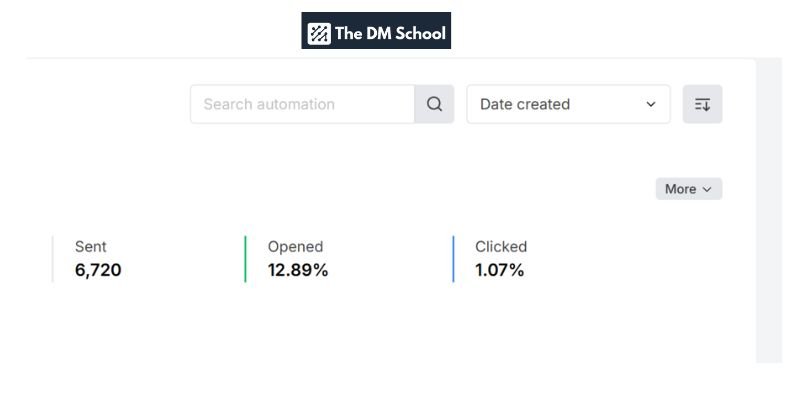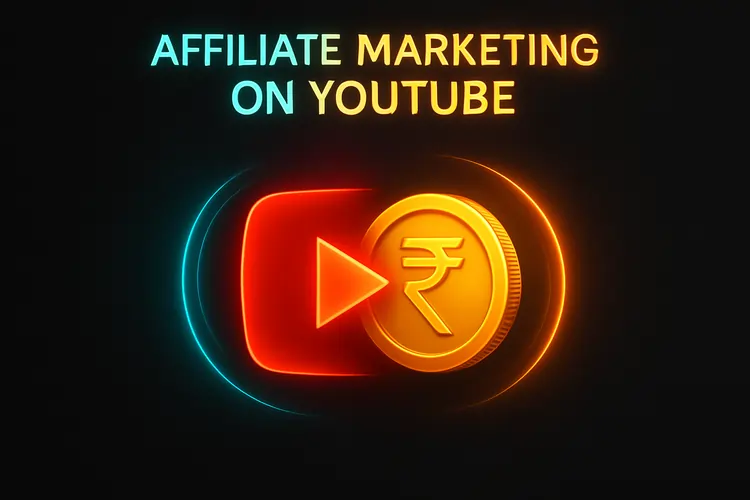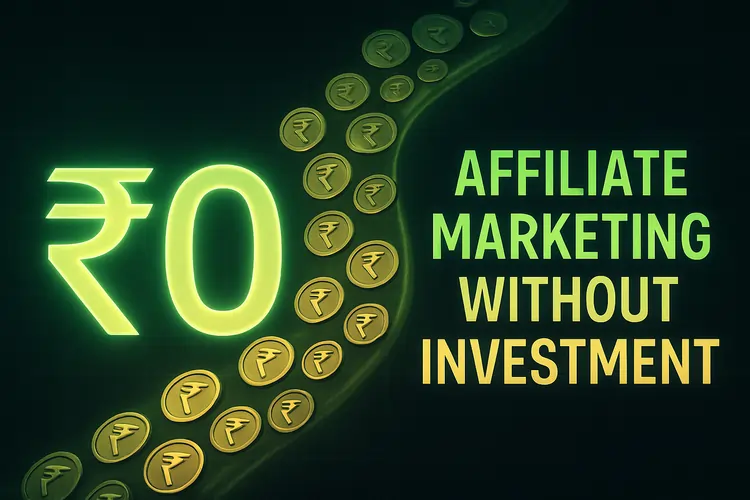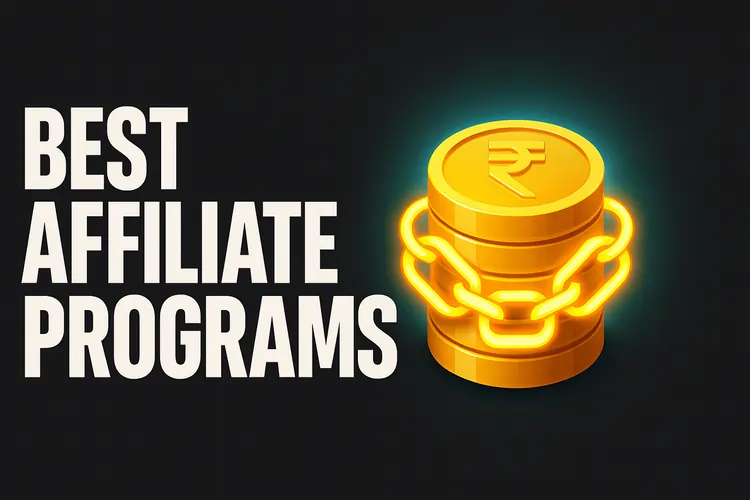Email marketing for affiliate marketing is the quiet engine behind consistent affiliate sales in India. While most affiliates chase flashy ads, the truth is email delivers predictable revenue — at scale. Global studies show email drives an average ROI of ₹36 for every ₹1 spent (Litmus, 2024). Yet in India, very few affiliates use it strategically.
If you’ve ever felt stuck — running ads, burning budget, but struggling to build real trust — this is your way out. With email, you don’t just rent attention from Facebook or Google; you own a list, nurture it, and convert it again and again.
Six months from now, you could look back at today as the day you stopped chasing hacks and built a compounding machine. In this guide, I’ll show you exactly how Indian affiliates can use email — with benchmarks, advanced tactics, and a 90-day blueprint — to grow sales without overspending.
Table of Contents — Email Marketing for Affiliate Marketing
- What is Email Marketing for Affiliate Marketing?
- Why Email Marketing Matters for Indian Affiliates
- Core Components of a Profitable Affiliate Email System
- Advanced Email Marketing Strategies for Affiliate Marketing
- Best Tools & Frameworks for Affiliate Email Marketing
- 90-Day Affiliate Email Blueprint for India
- FAQs on Email Marketing for Affiliate Marketing
What Is Email Marketing for Affiliate Marketing?
Quick Answer: Email marketing for affiliate marketing is the process of using permission-based email campaigns to promote affiliate products, build trust, and generate consistent commissions.
Email marketing for affiliate marketing is more than dropping links into a newsletter. It’s a system where affiliates build a targeted list, nurture relationships with valuable content, and insert affiliate recommendations at the right time. Unlike social platforms, you own the list — which means you control the reach, frequency, and message.
At The DM School, we’ve run affiliate campaigns at scale. Our internal data shows 6,720 emails sent delivered a 12.89% open rate and 1.07% CTR — proving that even in India, email drives measurable results when executed with discipline.

🔥 Pro Tip: Always use permission-based lists. Buying or scraping leads will tank deliverability and can get your domain blacklisted.
Summary: Email marketing for affiliate marketing means owning your audience, not renting it from platforms.
Now you can clearly define the system before diving into strategies.
Why Email Marketing Matters for Indian Affiliates
Most affiliates in India lean heavily on ads or social media for sales. The problem? Rising ad costs and algorithm changes eat margins fast. Email marketing for affiliate marketing flips this equation — you own the audience and can reach them anytime at near-zero cost.
Global benchmarks prove its power: email delivers an average ROI of ₹36 for every ₹1 spent (Litmus, 2024). For Indian affiliates in niches like ed-tech, finance, or health, this ROI often beats social or search channels because email builds trust and repeat touchpoints.
❌ Mistake to Avoid: Don’t treat email as just another traffic source. Unlike ads, it’s about nurturing — not blasting links.
Think about it: every time you send a new campaign, your ad cost per lead is ₹0. That compounding effect is why top affiliates build lists early instead of chasing short-term clicks.
Summary: Email delivers unmatched ROI and long-term control for Indian affiliates.
Now you can see why email should be your primary growth channel.
Core Components of a Profitable Affiliate Email System
Before advanced tactics, lock the fundamentals. Email marketing for affiliate marketing works when your foundation is clean: consent, authentication, content, and cadence.
1. Verified Domain & Inbox Authentication
Set up SPF, DKIM, and DMARC on your sending domain. Bulk senders must also support one-click unsubscribe. This protects your identity and boosts inboxing with Gmail/Yahoo.
Micro-win: Your emails stop landing in Promotions/Spam as frequently.
2. India-Grade Consent & Compliance
Use clear, revocable consent aligned with India’s DPDP Act, 2023. Offer easy opt-out, honour withdrawals quickly, and avoid targeting children with behavioral ads.
Micro-win: Fewer complaints, safer scaling, and stronger deliverability.
3. ESP Selection (Affiliate-Friendly Policies)
Choose ESPs that permit affiliate links with quality controls. Check policy/partner pages for GetResponse, Brevo (Sendinblue), and Omnisend. Follow content & complaint thresholds to stay in good standing.
Micro-win: Fewer policy flags, stable account health.
4. List Building (India-First)
Offer sharp lead magnets for Indian niches (ed-tech, finance, health). Use exit-intent popups, landing pages, and WhatsApp handoffs. Seed with warm audiences from your socials and YouTube.
Micro-win: Predictable subscriber growth at low CPA.
5. Content System (Value → Offer → Proof)
Run a simple cadence: 2–3 value emails/week (education, case snippets, mini-wins) + 1 offer email with clear CTAs and disclosures. Rotate stories, demos, and bonuses to avoid banner-blindness.
Micro-win: Higher trust and consistent CTR lift.
6. Hygiene & Metrics
Clean bounces, suppress chronically inactive contacts, and watch spam-complaints. Track opens, CTR, EPC, and refund/chargeback rates for each offer.
Micro-win: Better inboxing and higher earnings per send.
If you’re new to automation, start here: email automation guide by The DM School.
Summary: Nail authentication, consent, policy-safe ESPs, India-first list growth, value-led content, and hygiene.
Now you can build a clean, scalable engine before chasing advanced tricks.
Advanced Email Marketing Strategies for Affiliate Marketing
Once the basics are set, affiliates in India need advanced levers to push conversions higher. Email marketing for affiliate marketing scales best when you personalize content, segment your list, and optimise for India’s mobile-first audience.
📊 Segmentation & Personalization
- Segment by niche interest (finance vs. ed-tech).
- Tag subscribers based on clicks to refine offers.
- Use dynamic fields — name, location, last product viewed.
Mobile dominates inbox behaviour in India. Reports show over 70% of email opens come from smartphones (Netcore, 2024). This means shorter subject lines, responsive templates, and single CTA buttons convert better.
Test content styles. For example, adapt the global “Four by For Footers” trick (placing four quick offer reminders in your email footer) to Indian audiences by combining affiliate bonuses, limited-time offers, and Hindi call-to-actions for extra relatability.
Unlike generic global guides that stop at theory, Indian affiliates must also watch Gmail/Yahoo complaint thresholds. Keep unsubscribes visible and spam-complaints under 0.3% to avoid domain blocks.
Summary: Segmentation, personalization, mobile-first design, and footer tactics amplify affiliate email ROI.
Now you can start optimising campaigns for higher conversions instead of just more sends.
Best Tools & Frameworks for Affiliate Email Marketing
Choosing the right Email Service Provider (ESP) is non-negotiable. Some platforms ban affiliate links outright, while others allow them with compliance checks. Here’s a snapshot of tools affiliates in India can safely use.
| ESP | Affiliate Policy | Key Strengths | India-Specific Edge |
|---|---|---|---|
| GetResponse | Allows affiliate links with content quality checks | Strong automation, landing pages, AI subject line generator | Popular among Indian bloggers, supports UPI/INR billing |
| Brevo (Sendinblue) | Permits affiliate marketing with list-quality monitoring | SMS + email integration, simple pricing | Strong in India with SMS campaigns + WhatsApp API |
| Omnisend | Affiliate links allowed, clear disclosure required | Great for e-commerce flows, product-feed emails | E-commerce niche affiliates benefit from Shopify/Flipkart tie-ins |
| Moosend | Permits affiliates with clean sender history | Budget-friendly, drag-drop builder | Great for solopreneurs testing affiliate funnels |
| ActiveCampaign | Tighter rules, but affiliate links allowed in context | World-class automation, CRM built-in | High-ticket Indian affiliates use it for CRM + email flows |
Framework to follow: List → Nurture → Segment → Automate → Scale. Start small, test offers, then layer advanced flows. If you want deeper playbooks, explore our digital marketing funnel guide.
Summary: Pick affiliate-friendly ESPs and use a funnel-first framework for sustainable growth.
Now you can avoid platform bans and run professional-grade affiliate campaigns.
90-Day Affiliate Email Blueprint for India
Strategy only works if it’s actionable. Here’s a practical 90-day plan Indian affiliates can follow to turn email into a consistent revenue channel. Email marketing for affiliate marketing becomes predictable when broken into short sprints.
Week 1–2: Setup & Verification
Pick your ESP, verify domain with SPF/DKIM/DMARC, and configure Gmail/Yahoo one-click unsubscribe. Seed your list with warm contacts.
Micro-win: Emails land in inbox from day one.
Week 3–6: Build & Nurture
Launch lead magnets for Indian niches (finance, ed-tech, health). Create a 4-email welcome sequence mixing education, proof, and your first affiliate offer.
Micro-win: Subscribers expect and open your emails.
Week 7–9: Test & Optimise
Run A/B tests on subject lines, CTA buttons, and email length. Track open rate, CTR, and EPC. Keep complaint rates below 0.3%.
Micro-win: Identify what resonates with Indian audiences.
Week 10–12: Scale & Automate
Layer segmentation, personalised content, and seasonal campaigns (Diwali, Independence Day, IPL promos). Automate re-engagement flows for inactive leads.
Micro-win: A machine that sells while you sleep.
Follow this blueprint and you’ll shift from random campaigns to a compounding system. For deeper scaling, explore our case studies to see how The DM School drives predictable growth with email.
Summary: A 90-day phased system builds authority, optimises performance, and sets up automation for scale.
Now you can move from zero to a full affiliate email engine in 3 months.
FAQs on Email Marketing for Affiliate Marketing
1. What is email marketing for affiliate marketing?
It’s the process of using emails to promote affiliate products or services to a list of subscribers who’ve opted in. Unlike ads, you own the list and can send offers repeatedly — building trust, solving problems, and earning commissions through strategically placed links inside emails.
2. How do I start affiliate marketing with email in India?
Start by choosing an affiliate-friendly ESP like GetResponse or Brevo. Set up SPF/DKIM on your domain, create a lead magnet (like a checklist or free video), collect emails using forms or landing pages, then send a 3–5 email sequence. Promote offers with value-first content, not cold pitches.
3. Which email tools allow affiliate links without banning accounts?
Tools like GetResponse, Brevo (Sendinblue), Omnisend, and Moosend permit affiliate links as long as you maintain list quality and follow content guidelines. Avoid spammy promos or misleading subject lines. Always disclose affiliate intent clearly and track complaints to stay compliant.
4. How much money can I make using email marketing as an affiliate?
If done right, you can earn ₹30,000 to ₹1.5 Lakh per month depending on your list size, niche, and offer quality. Ed-tech, finance, and tools/software niches convert well. Even a small list of 1,000 engaged subscribers can generate ₹10K–₹25K/month consistently.
5. What are the best practices for affiliate email campaigns?
Use single opt-in or confirmed opt-in forms. Avoid purchased lists. Send 2–3 value emails per week and 1 offer. Include storytelling, proof, and urgency. Keep spam complaints under 0.3%, unsubscribe link visible, and test subject lines to improve open rates. Track metrics like CTR, EPC, and refund rates.
6. Is email marketing legal for affiliate marketing under Indian law?
Yes — as long as it follows the DPDP Act 2023. You must get clear, voluntary consent, provide an opt-out link, and avoid sending emails to minors or using sensitive personal data without compliance. Gmail/Yahoo also enforce technical standards like SPF/DKIM and one-click unsubscribe.


